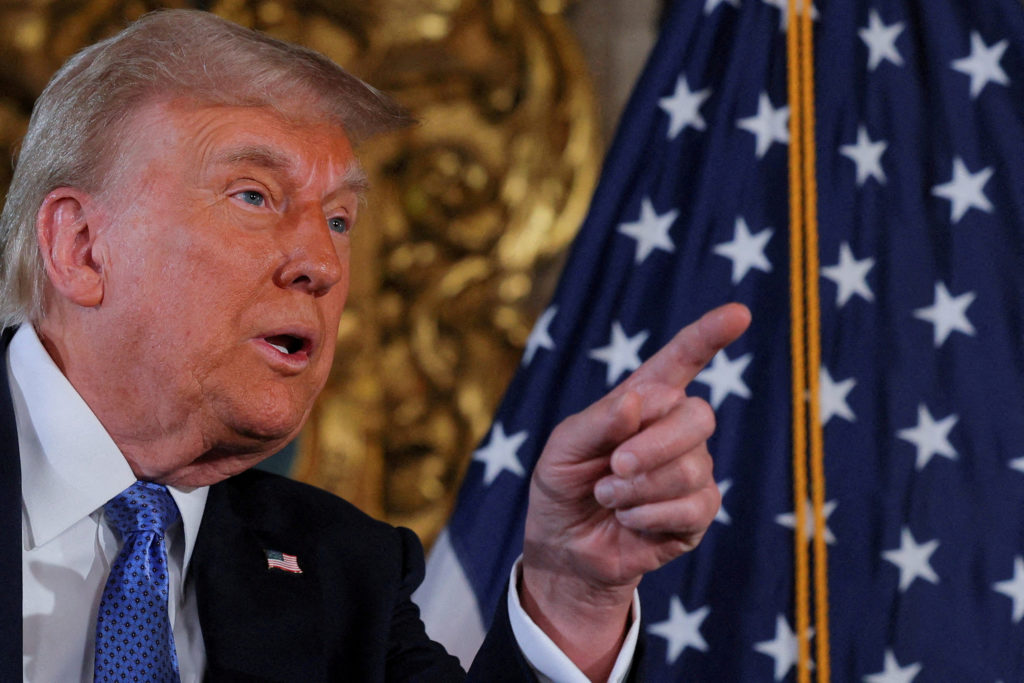US Government Faces Shutdown as Trump Pushes Unilateral Budget Cuts
International International NewsPosted by NewAdmin on 2025-03-04 08:46:44 |
Share: Facebook | Twitter | Whatsapp | Linkedin Visits: 20

The United States government is once again on the verge of a shutdown as negotiations between Republicans and Democrats remain deadlocked ahead of the March 14 funding deadline. At the center of the dispute is President Donald Trump’s push for unilateral budget cuts, which has led to heightened tensions between the executive and legislative branches. Trump’s insistence on bypassing congressional authority to impose widespread spending reductions has further complicated efforts to reach a bipartisan agreement.
This is not the first time the U.S. has faced a shutdown crisis under Trump’s leadership. In December 2024, Congress scrambled to pass a last-minute funding bill, but a bipartisan deal collapsed after Trump, backed by tech billionaire Elon Musk, urged Republicans to reject the proposal. The longest shutdown in U.S. history also took place during Trump’s first term, lasting 35 days between December 2018 and January 2019, due to a standoff over border wall funding.
The current impasse revolves around Trump’s efforts to override spending laws passed by Congress, suspend foreign aid, and lay off large numbers of federal workers. Democrats argue that these actions violate constitutional provisions that grant Congress the power to control government spending. They are demanding guarantees that Trump, along with his budget chief Russell Vought and adviser Elon Musk, will honor any funding agreement instead of making further unilateral cuts. However, Trump and his allies claim that the executive branch has the authority to withhold funds allocated by Congress as part of an effort to reduce government waste. Musk’s U.S. DOGE Service, a newly established federal agency, has played a key role in terminating government contracts and implementing cost-cutting measures.
House Speaker Mike Johnson has aligned with Trump, rejecting Democrats’ demands for spending assurances, calling them a “gross separation-of-powers violation.” Over the weekend, Republican negotiators withdrew from budget talks, leaving federal funding in limbo. Meanwhile, the Trump administration has already dismissed or offered buyouts to 100,000 federal workers, signaling further job cuts that could impact key government services.
If a spending agreement is not reached by the March 14 deadline, the government will be forced to furlough hundreds of thousands of workers and shut down nonessential operations. Essential services such as law enforcement and national security would continue, but financial regulation, national parks, and other government functions would come to a halt. With the deadline looming, all eyes are on Trump’s upcoming address to Congress, where he is expected to outline his budget priorities. Democrats insist they will not approve any spending bill without safeguards against further unilateral cuts, making a resolution increasingly uncertain. As both parties dig in their heels, the risk of a government shutdown grows, with potential consequences for federal workers, public services, and the broader economy.
Search
Categories
Recent News
- Hyderabad's Biryani Scam: When Food Delivery Meets Fraud
- RBI's UDGAM Portal: Hyderabad's Cyber Fraud Warning
- Hyderabad Gears Up for Presidential Visit: Traffic Advisory Issued
- Hyderabad Crypto Scam: Unraveling a Multi-State Fraud
- Cyber Scams Target Unsuspecting Citizens via RBI Portal
- Telangana's Tech-Driven Policing: Drones Take to the Skies
- RBI Governor Prioritises Digital Security: A Strategic Shift
- Hyderabad's Massive Anti-Drug Operation: 72 Foreigners Deported
Popular News
- Navigating IPO Market Dynamics Amid Volatility and Regulatory Changes
- Innovative Green Practices and Environmental Initiative
- Massive Worldwide Microsoft Outage Disrupts Multiple Sectors
- తెలుగుదేశం పార్టీ - పేదరికాన్ని నిర్మూలించడంలో వాగ్దానం
- Universities Embrace Remote Learning Technologies Amidst Ongoing Pandemic